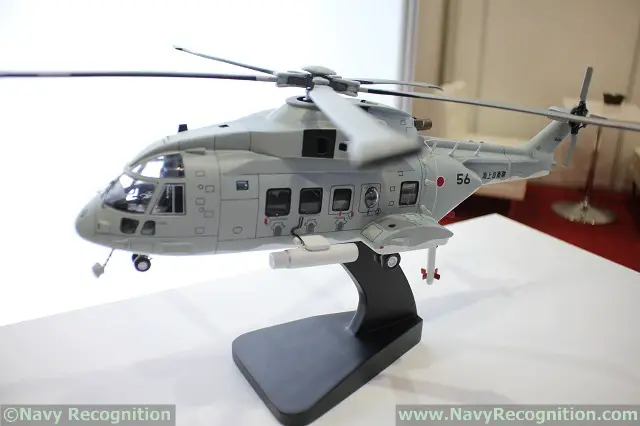|
The KHI MCH-101, is equipped with the Northrop Grumman AN/AQS-24A airborne mine hunting system and the Northrop Grumman AN/AES-1 Airborne Laser Mine Detection System (ALMDS). Together these systems provide a complete surface-to-bottom mine detection capability. The AW101/MCH-101 is one of only two helicopter types capable of towing the AN/AQS-24A and the only modern helicopter type. MCH-101 is also fitted with the Mk-104 acoustic mine sweeping gear.
The development of the AMCM variant of the AW101/MCH-101 has been led by Kawasaki Heavy Industries, as prime contractor, with AgustaWestland providing technical support. KHI has responsibility for system integration and design of the AN/AQS-24A carriage, deploy, tow and recovery system that is installed in the cabin. AgustaWestland in addition to providing technical support also modified the aircraft’s Automatic Flight Control System (AFCS) to be able to perform coupled towing patterns with the AN/AQS-24A.
The AN/AQS-24A is the only operationally proven, high speed airborne mine hunting system in the world. It features a high-resolution, side scan sonar for real time, detection, localization and classification of bottom and moored mines at high area coverage rates and a laser line scanner to provide precision optical identification of underwater mines and other objects of interest.
The AN/AES-1 Airborne Laser Mine Detection System (ALMDS) uses pulsed laser light and streak tube receivers housed in an external equipment pod to image the entire near-surface volume potentially containing mines. The ALMDS pod is mounted on the port weapon carrier and data is displayed on the cabin mission console.
Navy Recognition learned during MAST Asia 2017 that Leonardo Helicopters and KHI are planning to answer a JMSDF future requirement for search and rescue helicopter with the AW101 platform.
|
 MCH-101 scale model on KHI stand at MAST Asia 2017. Note the AN/AQS-24A mine hunting system.
MCH-101 scale model on KHI stand at MAST Asia 2017. Note the AN/AQS-24A mine hunting system.


























 MCH-101 scale model on KHI stand at MAST Asia 2017. Note the ALMDS pod.
MCH-101 scale model on KHI stand at MAST Asia 2017. Note the ALMDS pod.